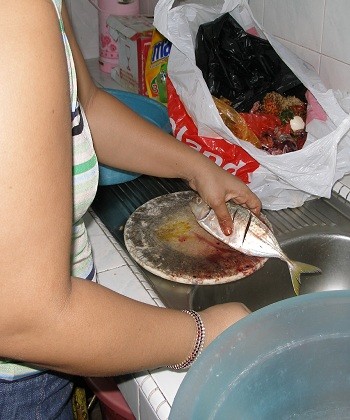Working-class women, especially domestic workers, have borne much of the burden of achieving Indonesia’s middle-income country status
Michele Ford
 |
Working-class women bear the brunt in an unequal societyMichele Ford |
Their labour force participation rate may still lag well behind that of Indonesian men, but Indonesian women have increasingly made the shift from traditional forms of economic activity to waged work. At a time when the green revolution and increased mechanisation of wet rice agriculture had eliminated many of the tasks traditionally undertaken by rural women, foreign investors began establishing the factories that drew a generation of young women away from the villages into the urban industrial workforce for the first time. Although many working-class women are engaged in informal sector activities like petty trade, millions now occupy low-skilled positions in the light manufacturing industries – particularly in garments and footwear, the industries that have underpinned Indonesia’s foray into export-oriented industrialisation.
Changes in the economy as a result of the subsequent growth of tertiary industries also created new white-collar opportunities for women, who are now well represented in professional and technical occupations. Overall, in 2010, women comprised around 36 per cent of Indonesia’s workforce of almost 113 million. The percentage was much higher among the university educated in paid employment, where women account for over 46 per cent.
The experiences of working class and middle class women could not be more different. Indonesian working women of all classes











